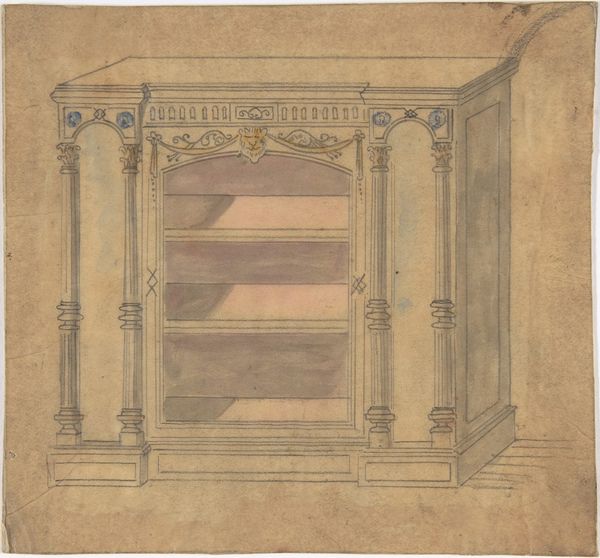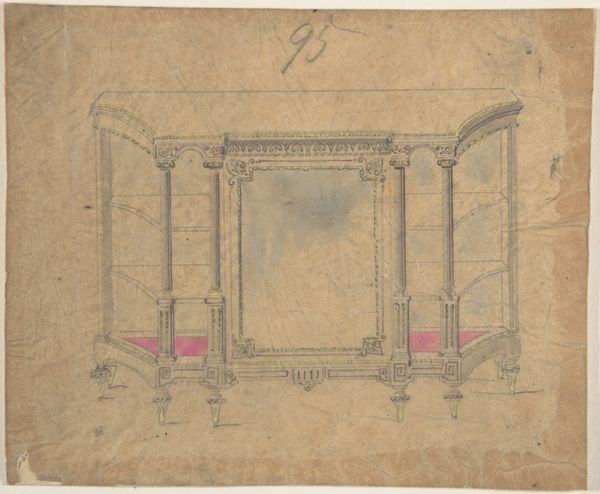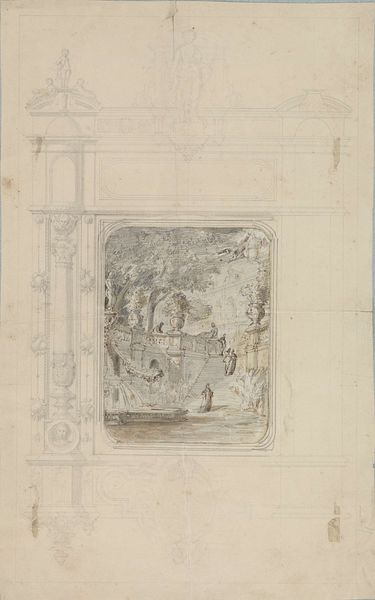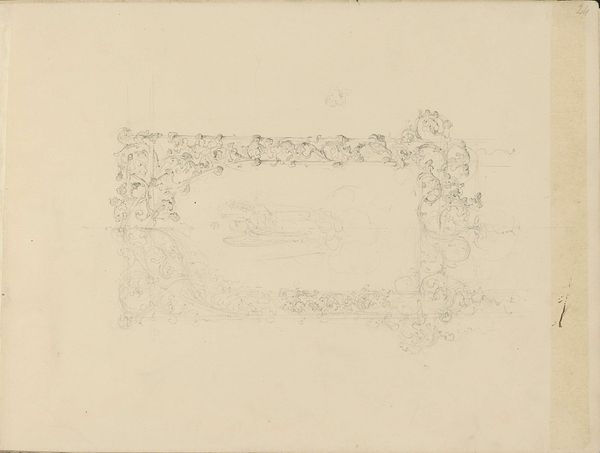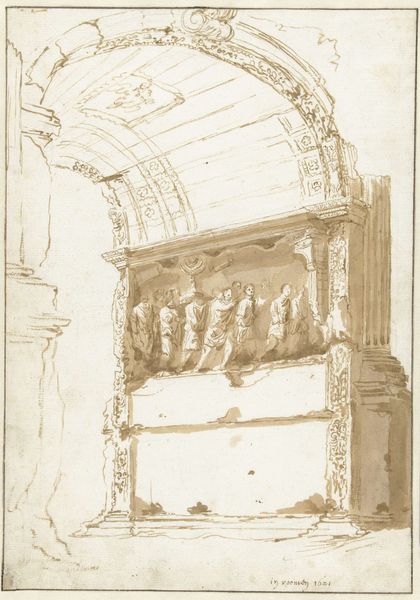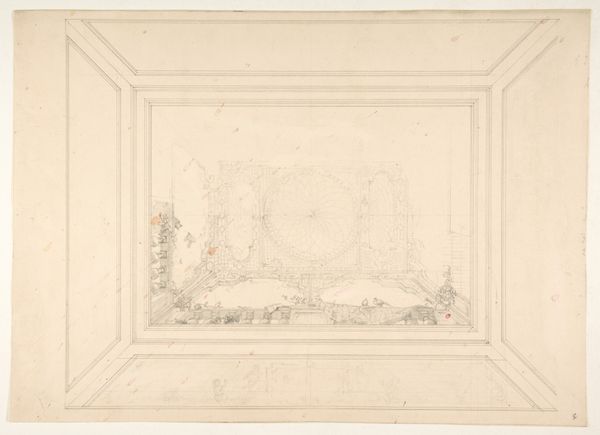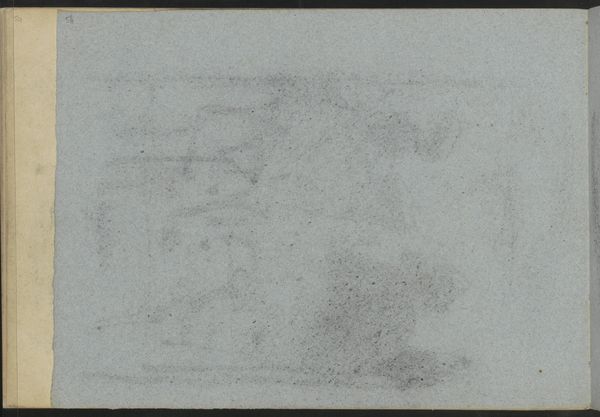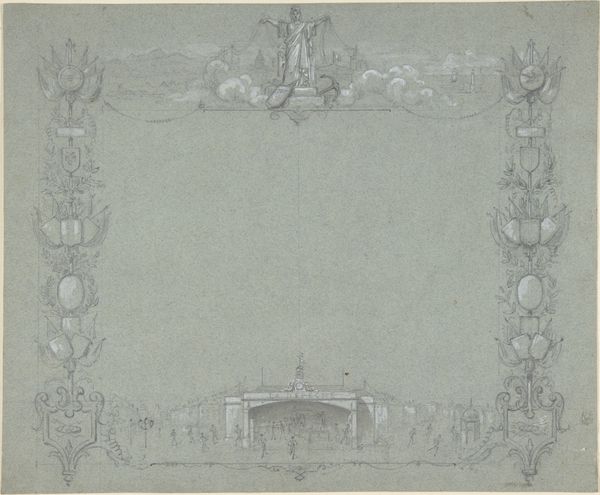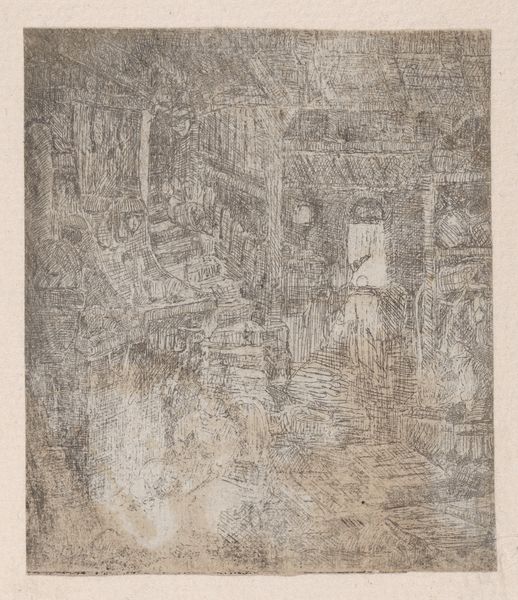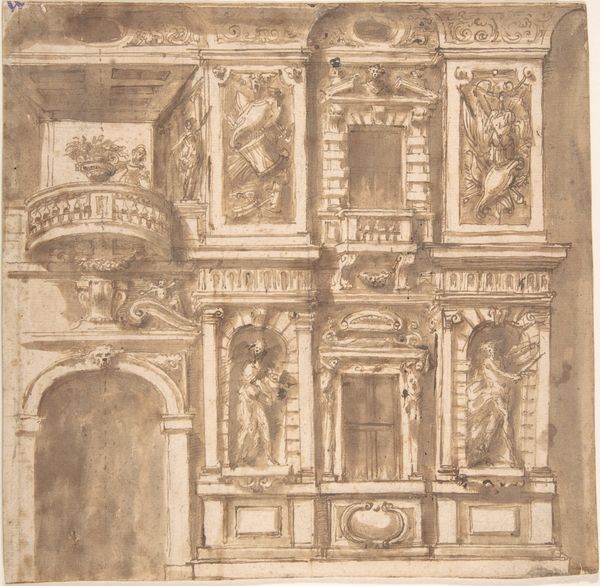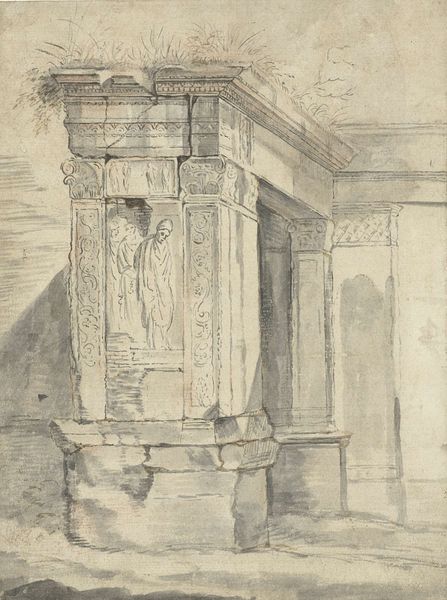
drawing, print, paper, pencil, graphite
#
drawing
#
germany
# print
#
perspective
#
paper
#
pencil
#
graphite
#
watercolor
Dimensions: 39 × 48 mm
Copyright: Public Domain
Curator: Before us, we have "Portico," a graphite drawing by Domenico Quaglio. Editor: My first thought? Intricacy. There's a palpable sense of receding space, though rendered with seemingly simple means. It’s almost oppressive but I admire its elegance in the draftsmanship. Curator: Exactly. The composition showcases a mastery of one-point perspective. Observe how Quaglio orchestrates a system of verticals—the columns and pilasters, which emphasize the orthogonality of the space. They guide the eye towards a distant, undefined vanishing point. Editor: And the materiality, though it looks humble, reveals its craft. It makes you wonder: what paper did he use? How did he prepare the graphite? This wasn't just about aesthetic pursuit. What kind of labor would such a study have been intended for? For practice or further study? It makes me think about access, both to this grand imagined space and to the raw materials with which it's depicted. Curator: Valid questions. We also need to address its pictorial illusion. The modulation of light and shadow suggests a classical source—note the shadows cast on the ceiling versus the filtered light across the colonnade. Consider, though, what the perspective gives the subject—is it designed to instill power, religious awe? Editor: It reminds us, too, of the economy of means by which such illusions are built, through both skill and materials. I suppose there are also hidden infrastructures here, from access to graphite to affordable paper. Curator: Absolutely, the material reality can't be divorced from its historical function and production of social spaces. This also creates an open dialogue between the depicted scene and how architecture of that nature shapes modern structures and perceptions. Editor: It definitely prompts us to see beyond the aesthetic delight and ponder its ties with material conditions. Thank you. Curator: Likewise, thank you. I am grateful that the dialogue around composition and perspective could intersect with inquiries about craft, labor, and consumption.
Comments
No comments
Be the first to comment and join the conversation on the ultimate creative platform.

